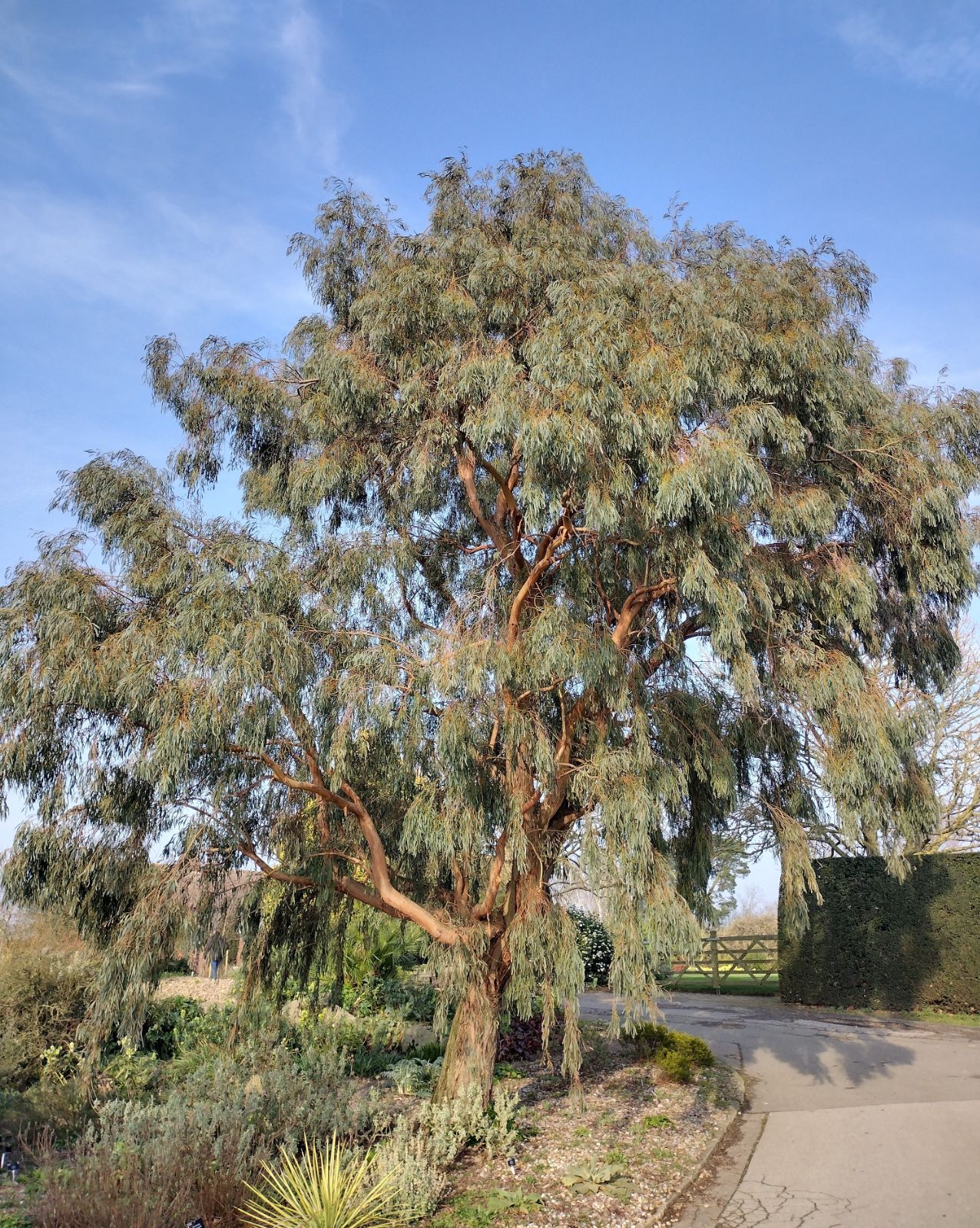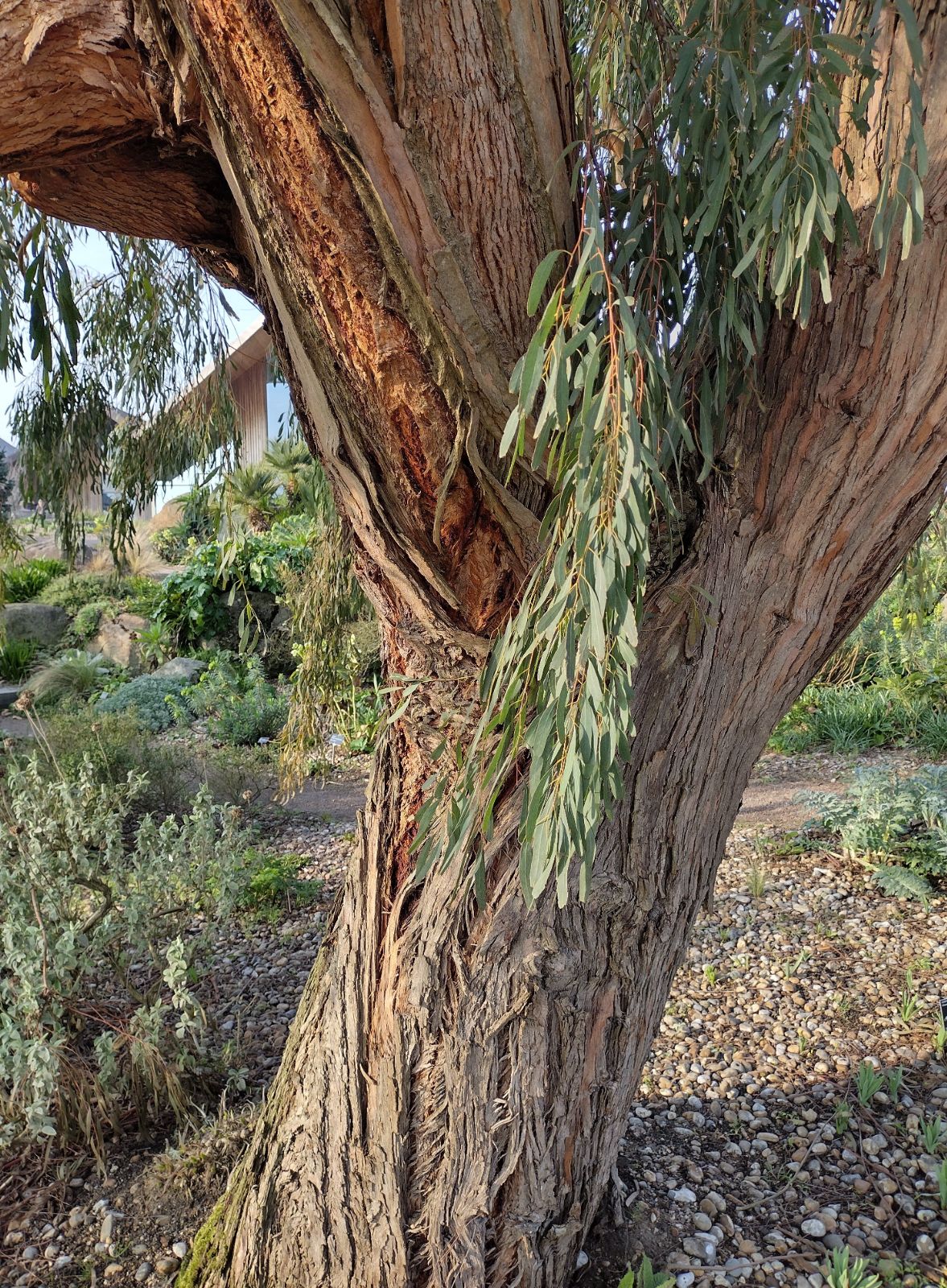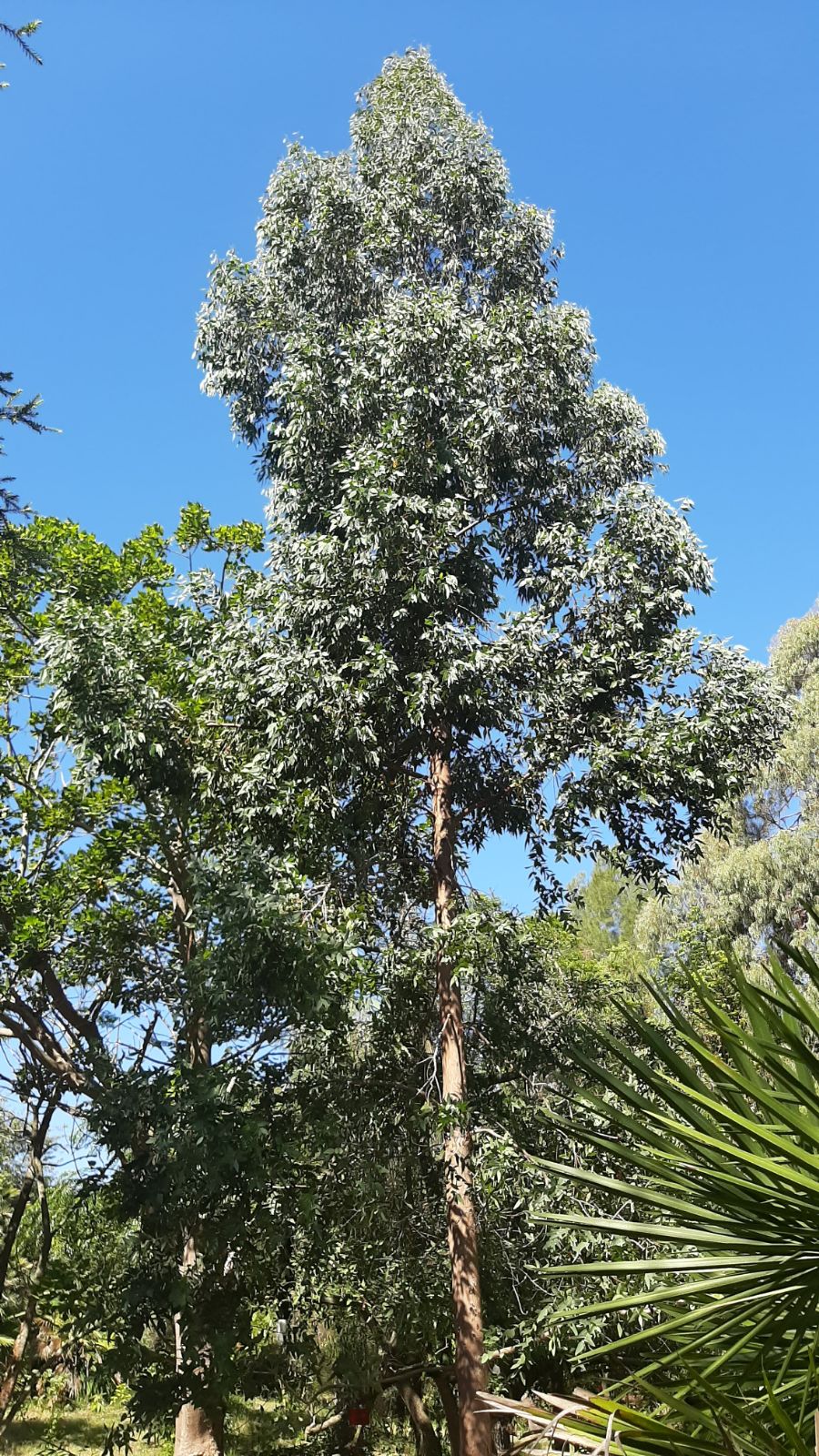Eucalyptus nicholii
Credits
Article from New Trees by John Grimshaw & Ross Bayton
Recommended citation
'Eucalyptus nicholii' from the website Trees and Shrubs Online (treesandshrubsonline.
Genus
Common Names
- Nichol's Willow-leaved Peppermint
Other taxa in genus
- Eucalyptus acaciiformis
- Eucalyptus albida
- Eucalyptus amygdalina
- Eucalyptus archeri
- Eucalyptus blakelyi
- Eucalyptus bridgesiana
- Eucalyptus brookeriana
- Eucalyptus camaldulensis
- Eucalyptus camphora
- Eucalyptus chapmaniana
- Eucalyptus cinerea
- Eucalyptus coccifera
- Eucalyptus cordata
- Eucalyptus crenulata
- Eucalyptus cypellocarpa
- Eucalyptus dalrympleana
- Eucalyptus delegatensis
- Eucalyptus elliptica
- Eucalyptus fastigata
- Eucalyptus fraxinoides
- Eucalyptus globulus
- Eucalyptus gregsoniana
- Eucalyptus gunnii
- Eucalyptus johnstonii
- Eucalyptus kybeanensis
- Eucalyptus lacrimans
- Eucalyptus laophila
- Eucalyptus leucoxylon
- Eucalyptus macarthurii
- Eucalyptus macrorhyncha
- Eucalyptus mannifera
- Eucalyptus melliodora
- Eucalyptus mitchelliana
- Eucalyptus moorei
- Eucalyptus morrisbyi
- Eucalyptus neglecta
- Eucalyptus nitens
- Eucalyptus nova-anglica
- Eucalyptus obliqua
- Eucalyptus oreades
- Eucalyptus ovata
- Eucalyptus parvula
- Eucalyptus pauciflora
- Eucalyptus praecox
- Eucalyptus radiata
- Eucalyptus regnans
- Eucalyptus remota
- Eucalyptus risdonii
- Eucalyptus rodwayi
- Eucalyptus rubida
- Eucalyptus saligna
- Eucalyptus sideroxylon
- Eucalyptus stellulata
- Eucalyptus subcrenulata
- Eucalyptus tenuiramis
- Eucalyptus urnigera
- Eucalyptus viminalis
Tree to 18 m. Bark persistent, rough and fibrous, yellowish or greyish brown to grey throughout. Branchlets yellowish red. Juvenile leaves alternate, shortly petiolate, linear and greyish green. Adult leaves thin and dull greyish green to blue-green, 7.5–14 × 1–2.5 cm, narrowly lanceolate to lanceolate, lateral veins indistinct, margins entire, apex acuminate; petiole terete, 0.7–1.2 cm long. Inflorescences solitary and axillary; umbellasters with seven flowers. Flower buds ovoid or spindle-shaped; hypanthium 0.2 cm wide; stamens white or cream. Capsule hemispherical to conical, 0.3–0.4 cm diameter; valves three, exserted. Chippendale 1988. Distribution AUSTRALIA: New South Wales (New England Tableland). Habitat Well-drained slopes and ridges with poor soils. USDA Hardiness Zone 9. Conservation status Not evaluated. Cross-reference K48.
Eucalyptus nicholii is a very ornamental tree with fine willowy growth and narrow leaves, growing rapidly for the first few years, but then slowing down. The orange-red bark and dark red young stems contrast well with the glaucous leaves. When crushed the leaves have a strong peppermint scent. Unfortunately trees grown from the normal seed sources are not particularly hardy, being killed at –8 or –9 ºC, and not resprouting, although hardiness does improve with maturity. From colder provenances they are much tougher – trees from 1200 m in the Central Tablelands of New South Wales, for example, surviving –11 to –14 ºC in the United States, though making a shorter and somewhat crooked tree (S. Hogan, pers. comm. 2007). It is very wind-resistant, and is a good choice for exposed sites (Hogan 2008). Its rather marginal hardiness has not stopped it being planted widely in the United Kingdom, as indeed it deserves to be, and many notable specimens in the southern counties are listed by TROBI, the tallest being one of 15 m on Battleston Hill at Wisley in 2000.
A rather similar species, E. pulchella Desf. (White Peppermint) from Tasmania, also has narrow leaves on a weeping tree, but the foliage is so dense that the tree is not ‘see-through’. It is said to be even more beautiful than E. nicholii, but usually to be less hardy (Gum Group 2007). However it has survived three winters at Lullingstone Castle, achieving 5 m in that time, so it is clearly a species to investigate.



